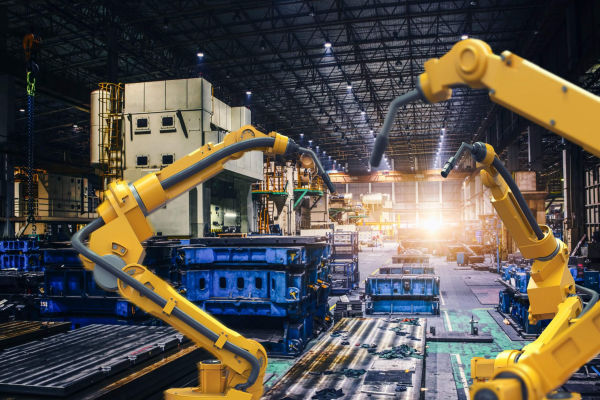The global manufacturing sector is undergoing a dramatic transformation driven by automation, digitalization, and data-centric technologies. At the heart of this industrial shift lies the machine control market, a cornerstone in achieving precision, efficiency, and scalability across sectors such as automotive, aerospace, construction, mining, and agriculture. Machine control systems, which integrate sensors, GNSS, robotics, and advanced software algorithms, are no longer ancillary components—they are essential infrastructure in smart manufacturing ecosystems. As Industry 4.0 continues to shape production environments, the demand for highly accurate, autonomous, and adaptive machine operations is increasing. This trend is reflected in the rapid expansion of the machine control market, which is being propelled by several key drivers including operational efficiency, cost optimization, labor shortage mitigation, and the increasing complexity of manufacturing requirements. According to the Consegic Business Intelligence report, Machine Control System Market size is estimated to reach over USD 10,858.22 Million by 2032 from a value of USD 6,379.21 Million in 2024 and is projected to grow by USD 6,725.60 Million in 2025, growing at a CAGR of 7.5% from 2025 to 2032.
Integration of GNSS and 3D Machine Guidance in Industrial Equipment:
One of the pivotal technologies fueling the machine control market is the integration of Global Navigation Satellite Systems (GNSS) and 3D guidance systems into heavy equipment and manufacturing machinery. These systems enable automated machine positioning and operation within extremely tight tolerances, significantly reducing human error and rework.
In sectors such as construction and mining, machine control systems integrated with GNSS provide real-time positioning data for excavators, bulldozers, and graders, optimizing earthmoving operations and ensuring conformity to design blueprints. This precision not only improves productivity but also minimizes fuel consumption and material wastage—a critical cost-saving factor for large-scale projects.
Within factory settings, 3D laser scanning and robotic total stations are used to calibrate and align machine tools, assembly lines, and inspection systems. These high-precision control systems are increasingly governed by cloud-based platforms, which allow for centralized data storage, analytics, and remote troubleshooting—essential features in globally distributed manufacturing operations.
Automation and Real-Time Feedback Enhancing Manufacturing Efficiency:
Modern machine control systems are deeply integrated with real-time feedback loops, enabling dynamic adjustments based on sensor input and process variables. This capability supports the implementation of closed-loop control architectures, where machine behavior is continuously optimized to adapt to changing operational conditions or product specifications.
In CNC machining and additive manufacturing, for instance, machine control software dynamically adjusts tool paths, speeds, and feed rates based on sensor inputs measuring material hardness, temperature, or vibration. The result is higher-quality output with minimal material loss and reduced tool wear.
Moreover, the incorporation of machine vision, edge computing, and AI-driven analytics into control systems enables predictive diagnostics, automated part verification, and autonomous quality control—all of which contribute to reduced downtime and enhanced throughput in high-mix, low-volume production environments.
Market Trends and Strategic Implications for OEMs and Integrators:
The machine control market is experiencing significant growth, with increasing investments from OEMs, system integrators, and digital solution providers. A strong push toward modular, scalable systems is emerging, allowing manufacturers to upgrade existing machinery with retrofit machine control kits rather than investing in entirely new equipment. This trend is particularly beneficial for SMEs looking to adopt automation without extensive capital expenditure.
Additionally, the rise of electrification and autonomous vehicles in construction and agriculture is accelerating the development of machine control systems capable of managing fully autonomous operations. These platforms are often integrated with advanced sensor fusion, LiDAR, and V2X communication protocols to ensure safe and efficient operation in dynamic environments.
For market players, differentiation is increasingly based on interoperability, cybersecurity, and data monetization. Vendors offering open-platform systems that can interface with various machine brands and manufacturing execution systems (MES) are gaining traction. Meanwhile, data derived from machine control systems is being leveraged for process optimization, cost forecasting, and supply chain synchronization—creating new revenue models for service-based offerings.
Conclusion:
The machine control market is a critical driver in the modernization of manufacturing and industrial operations, offering a pathway to enhanced precision, efficiency, and autonomy. As smart manufacturing continues to evolve, machine control technologies will remain at the core of this transformation, enabling real-time decision-making, optimized resource utilization, and consistent product quality.
For manufacturers and solution providers, staying competitive in this landscape requires ongoing innovation in software-hardware integration, seamless data communication, and scalable automation solutions. As demand for intelligent systems increases, the machine control market is poised not just for growth, but for redefining the operational DNA of 21st-century manufacturing.













